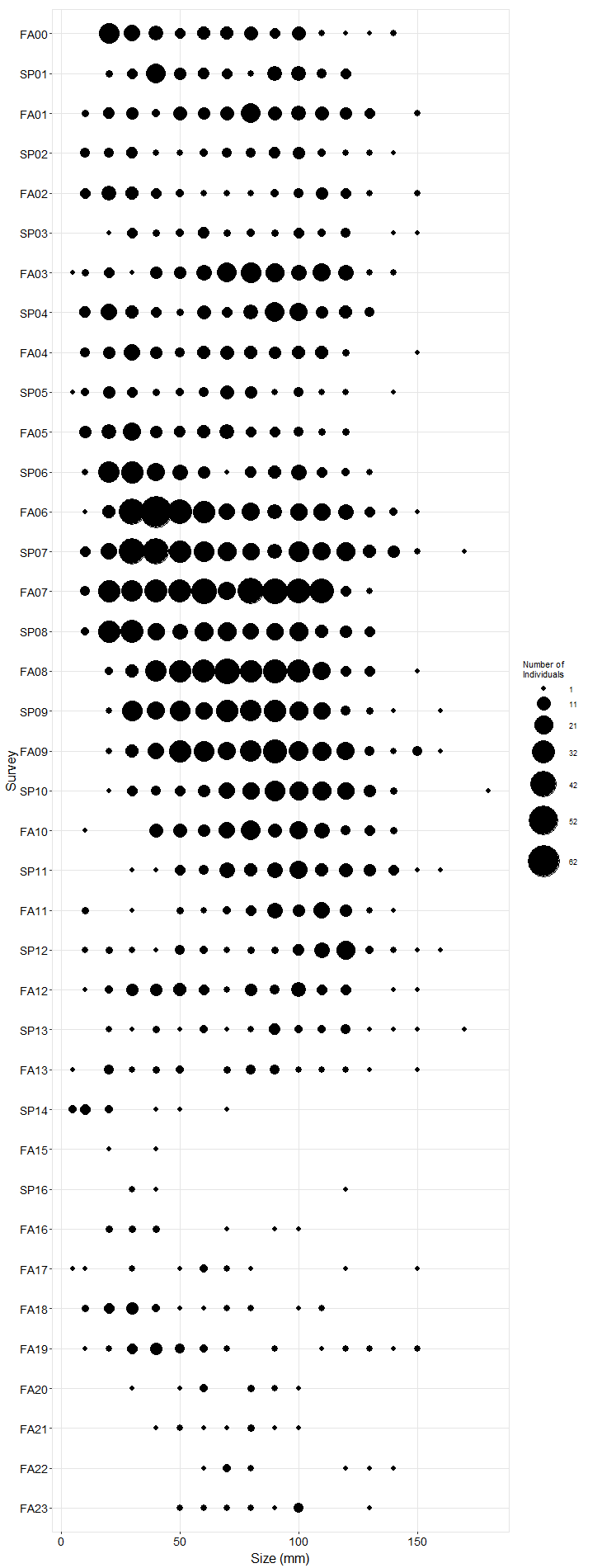
Long-Term Monitoring Trend Graphs
The barnacle plots at Hazards are located in an area heavily influenced by sand, and declines were often associated with scouring events. These events are often associated with increased abundance of the opportunistic red and green algae, Porphyra and Ulva, which rapidly colonize bare space cleared by sand scour. Mytilus plots at Hazards were established fairly high in the mussel zone to make sampling easier when large swells were present at this site famous for its’ surf. An added benefit to placing the mussel plots at the upper edge of their zone was that gooseneck barnacles (Pollicipes) were also common here and could be monitored along with the mussels. Both Mytilus and Pollicipes cover have been relatively stable over time at Hazards, although and increase in mussels has been observed following loss of sea stars due to wasting syndrome.
In Silvetia plots, cover of the rockweed has cycled through long periods of gradual decline followed by recovery. As of 2024, Silvetia cover was near a 30-year low. Endocladia declined during the first few years that it was monitored at Hazards but has hovered around 10-20% cover since this initial decline. As with many other sites, turfweed cover fluctuated seasonally, with higher cover in spring than in fall. Some of the open space resulting from reduced cover of Endocladia has been colonized by barnacles. Mean cover of Mazzaella remained relatively constant over time at Hazards, until 2018, when a decline occurred that was accompanied by increased cover of mussels. As of 2024, Mazzaella was trending toward recovery and mussels appeared to be declining. Field sampling of these plots ended in 2015, but they are still photographed and scored in the lab using a reduced set of species.
Phyllospadix cover at Hazards remained high over time, although it should be noted that averages are not always based on all three transects. Transects at this site were established in the very low intertidal and thus cannot always be sampled, which explains the data gaps. In FA02, SP03, SP09, FA09 and FA10 only the highest transect could be sampled, and in FA05, SP06, FA07, FA08, and SP10 only two transects were accessible. In 2020, new surfgrass transects were established in a more accessible location, and sampling of the original transects was discontinued.
Pisaster ochraceus were abundant but variable for the first several years they were monitored at Hazards. Numbers increased substantially in 2006/2007, and size data suggest that this increase may have been due to a large recruitment event just before this period as large numbers of juveniles were recorded. In 2008, a declining trend began, and counts of ochre stars are currently quite low, following further decline due to sea star wasting syndrome. In addition, the plots were buried in sand from early August 2014 through mid-September 2014, as evidenced by data collected from our temperature logger (which is located at the edge of plot 1), extremely high scour seen throughout the plots, and an enormous berm of drift found just above the sea star and barnacle plots in fall 2014. This sand burial and subsequent scour likely impacted the sea star counts at this site, as healthy stars were found outside the plots. Ochre stars have shown little sign of recovery through 2024.
In order to standardize species resolution across all MARINe groups and over time, some species (typically rare) were lumped for graphical presentation of Long-Term monitoring data. See lumped categories for definitions (some variation occurs between methods and over time).
If you experience any barriers accessing the trend graphs below, please contact (pacificr@ucsc.edu) for help.
Photo Plots

Below are the trends observed for each Photo Plot target species at this site. Long-Term percent cover trend graphs also include any species that reached a minimum of 25% cover during any single point in time within a given target species assemblage. Breaks in trend lines represent missed sampling events. For additional species observed that did not meet this 25% threshold, please use the Graphing Tool.
Chthamalus/Balanus (Acorn Barnacles) – percent cover
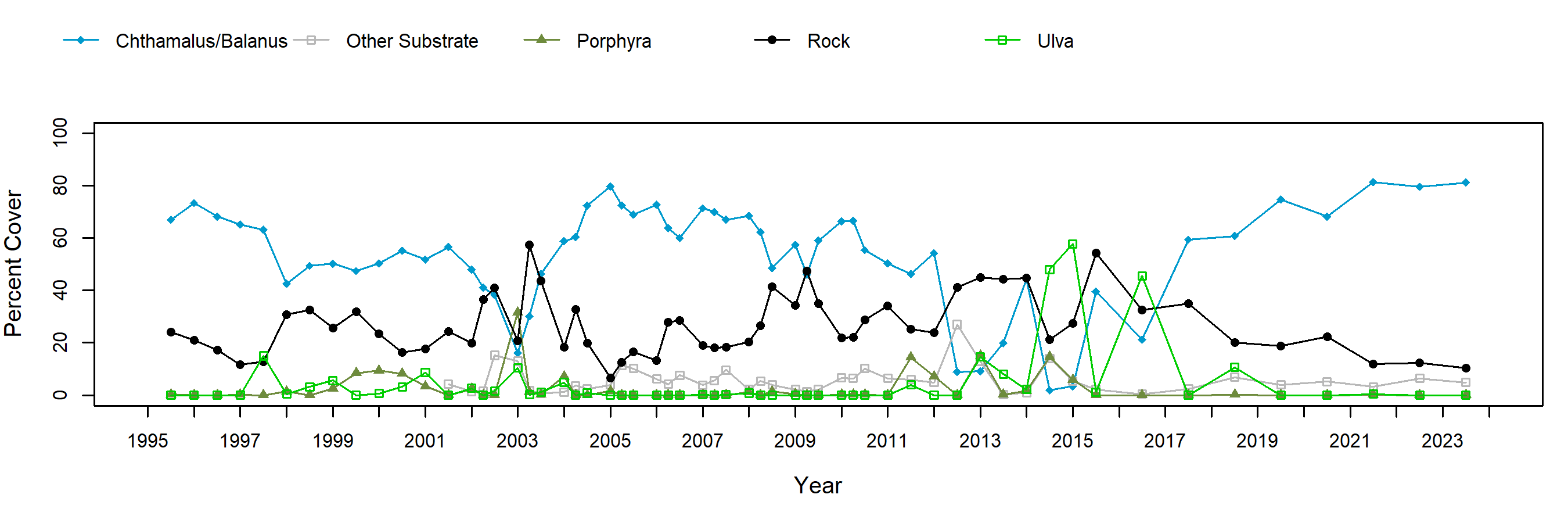
Chthamalus/Balanus (Acorn Barnacles) – motile invertebrate counts
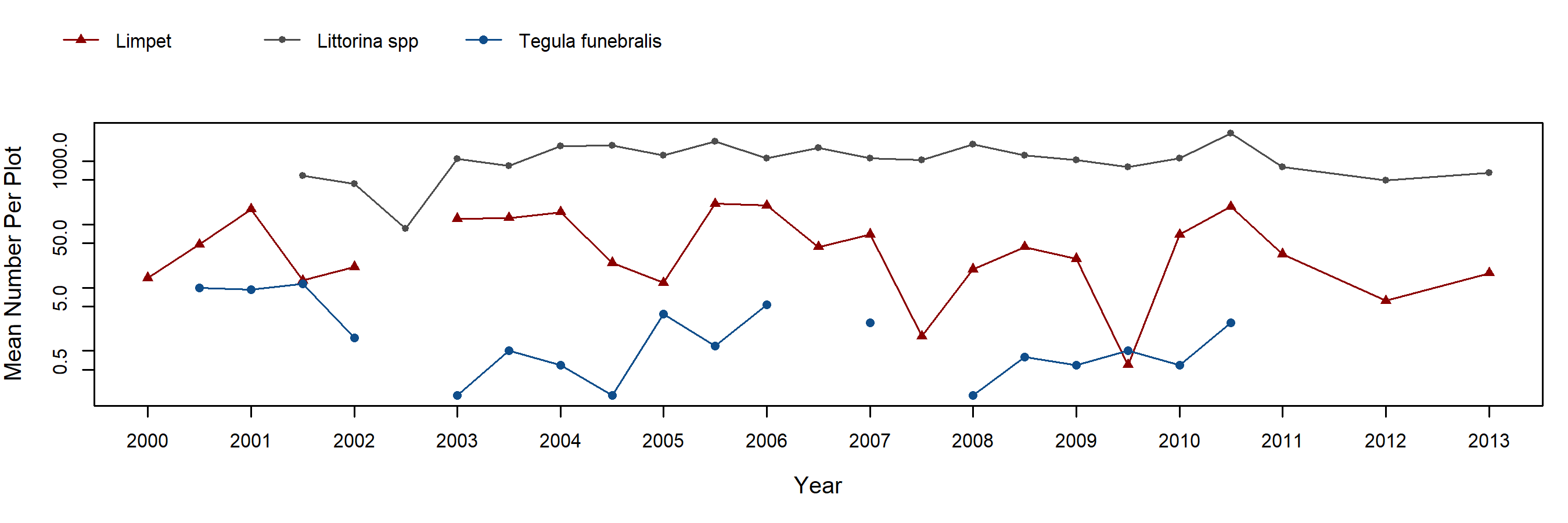
Mytilus (California Mussel) – percent cover
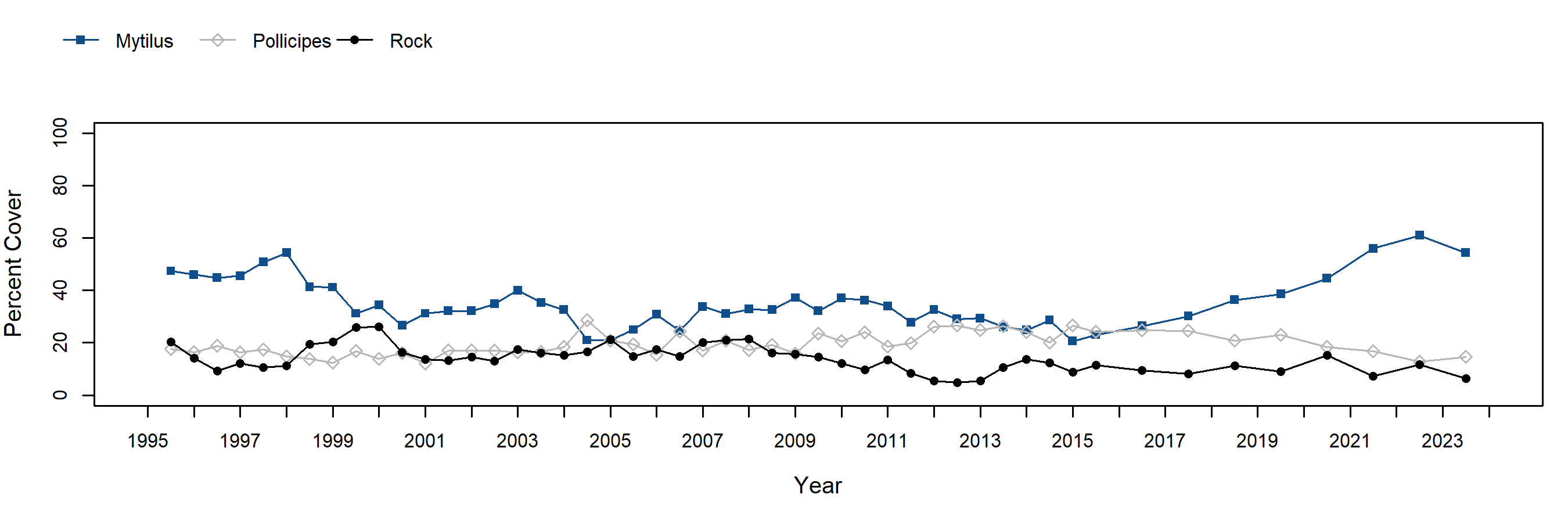
Mytilus (California Mussel) – motile invertebrate counts
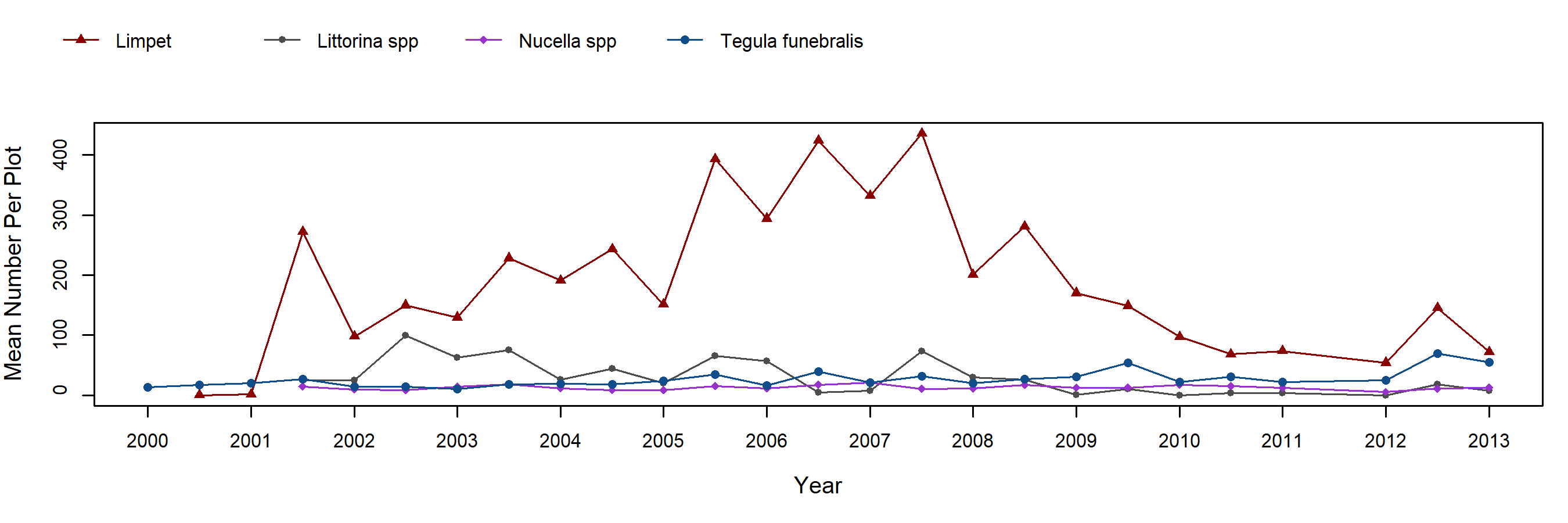
Silvetia (Golden Rockweed) – percent cover
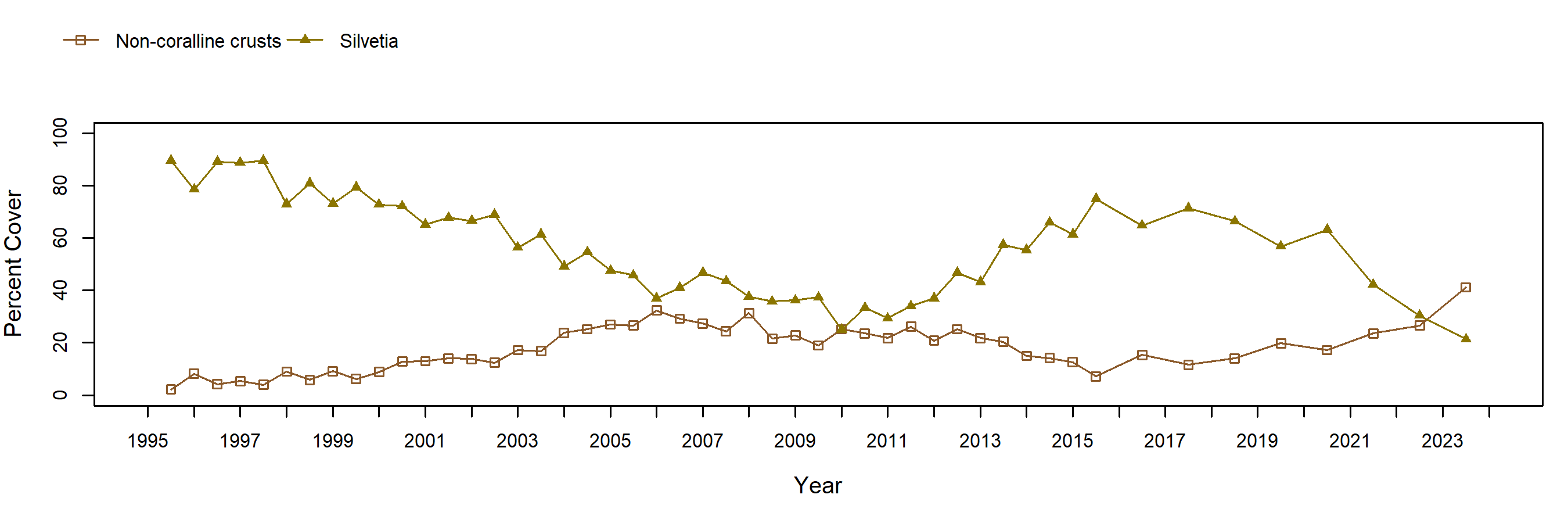
Silvetia (Golden Rockweed) – motile invertebrate counts
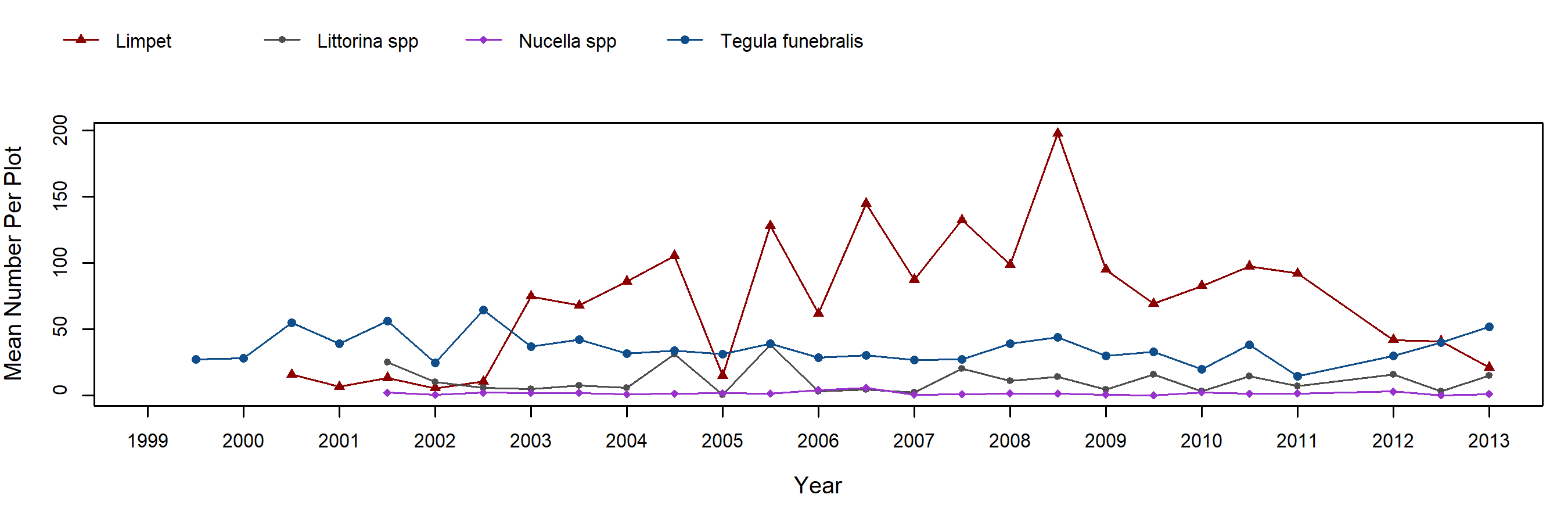
Endocladia (Turfweed) – percent cover
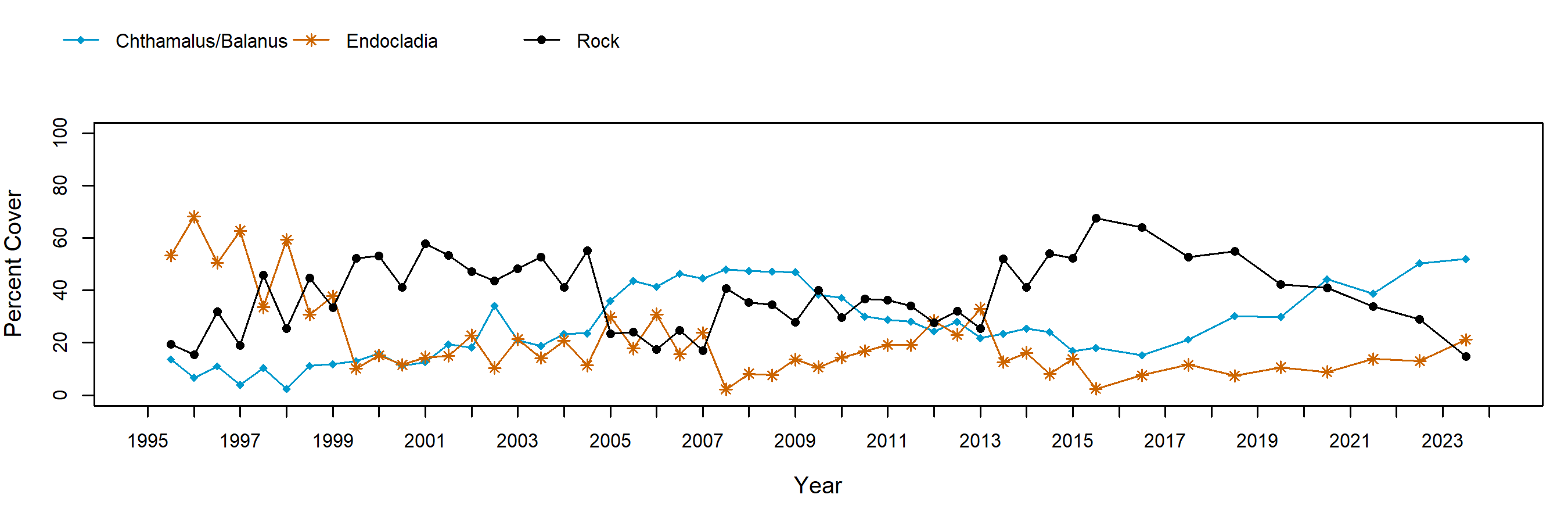
Endocladia (Turfweed) – motile invertebrate counts
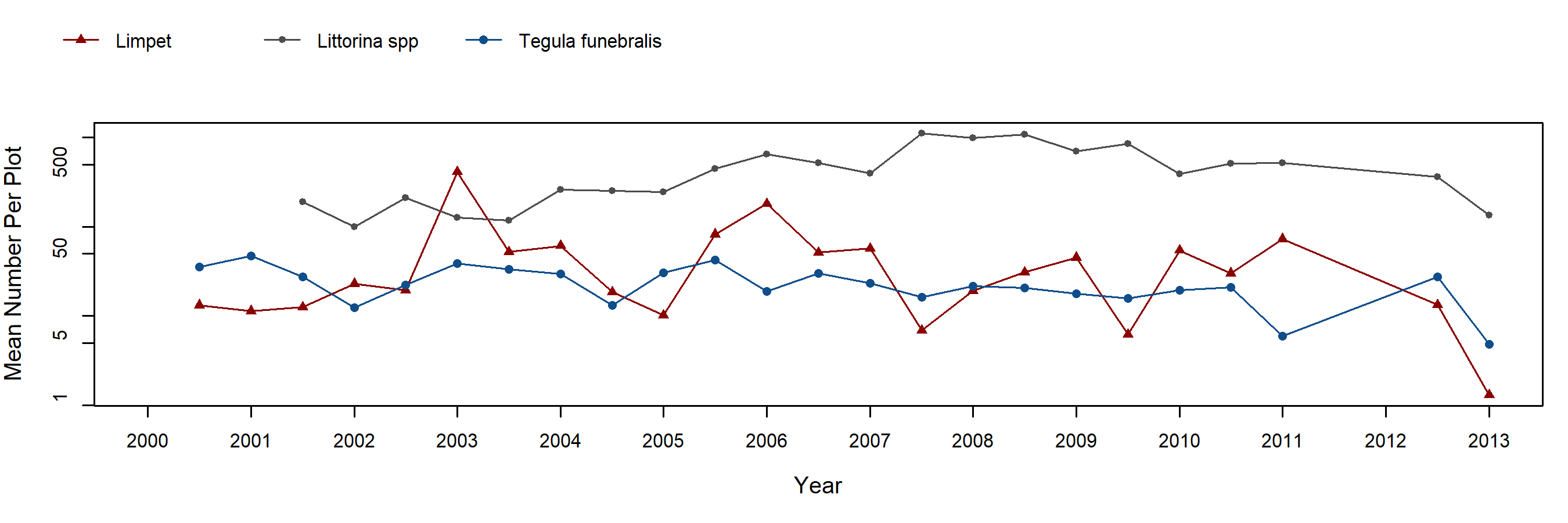
Mazzaella (Iridescent Weed) – percent cover
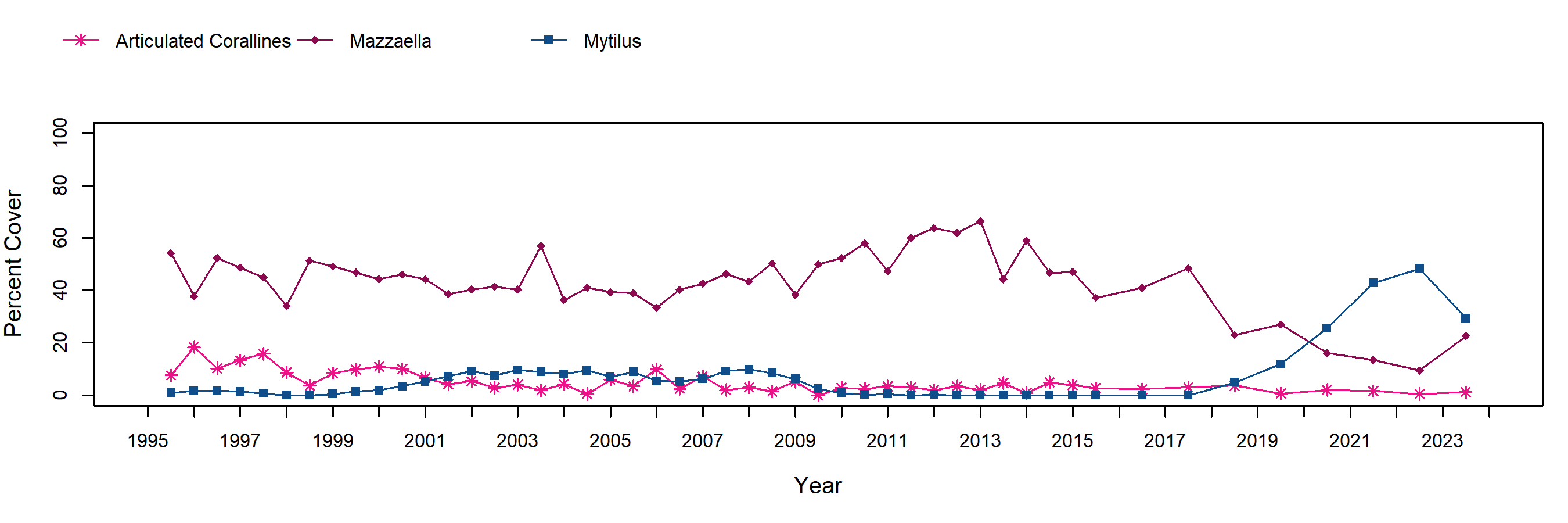
Transects

Below are the trends observed for each Transect target species at this site. Long-Term trend graphs also include any species that reached a minimum of 25% cover during any single point in time within a given target species assemblage. Breaks in trend lines represent missed sampling events.
Phyllospadix (Surfgrass)
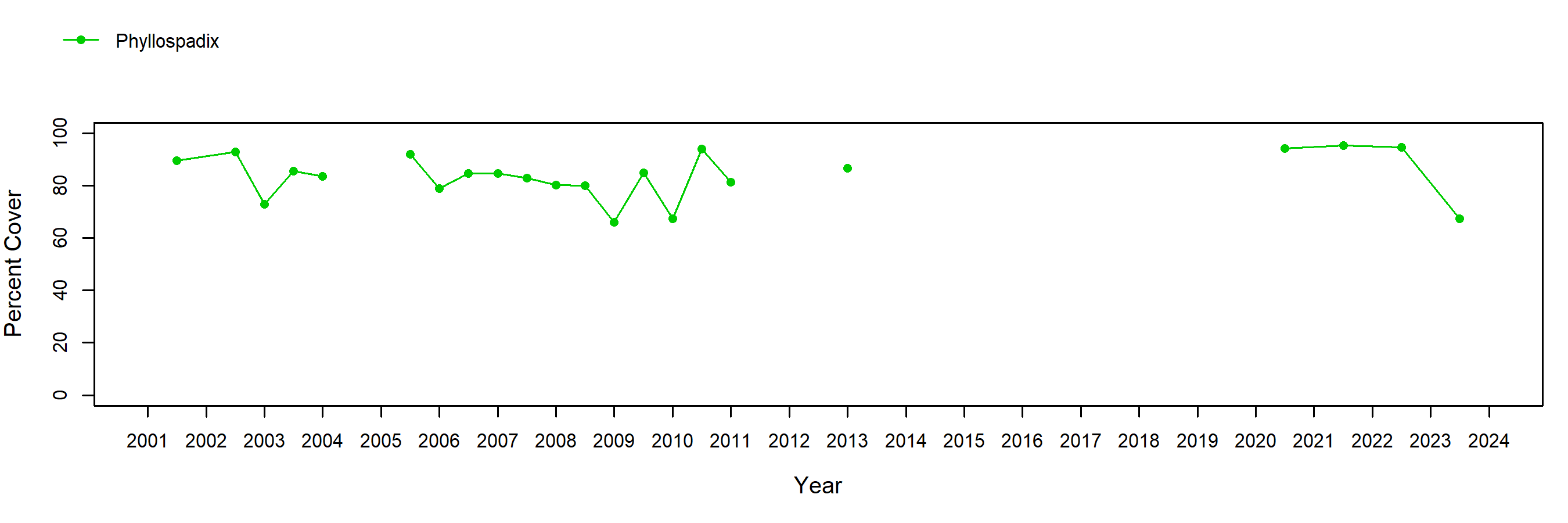
Species Counts and Sizes

Species Counts and Sizes (where recorded) for Pisaster are shown below for this site. At some sites, other sea star species and Katharina are counted in addition to Pisaster. The sum of all individuals across all plots is displayed. Note that data gaps are represented by breaks in long-term count trend lines, but are not shown in size plots.
Pisaster ochraceus (Ochre Star) – counts
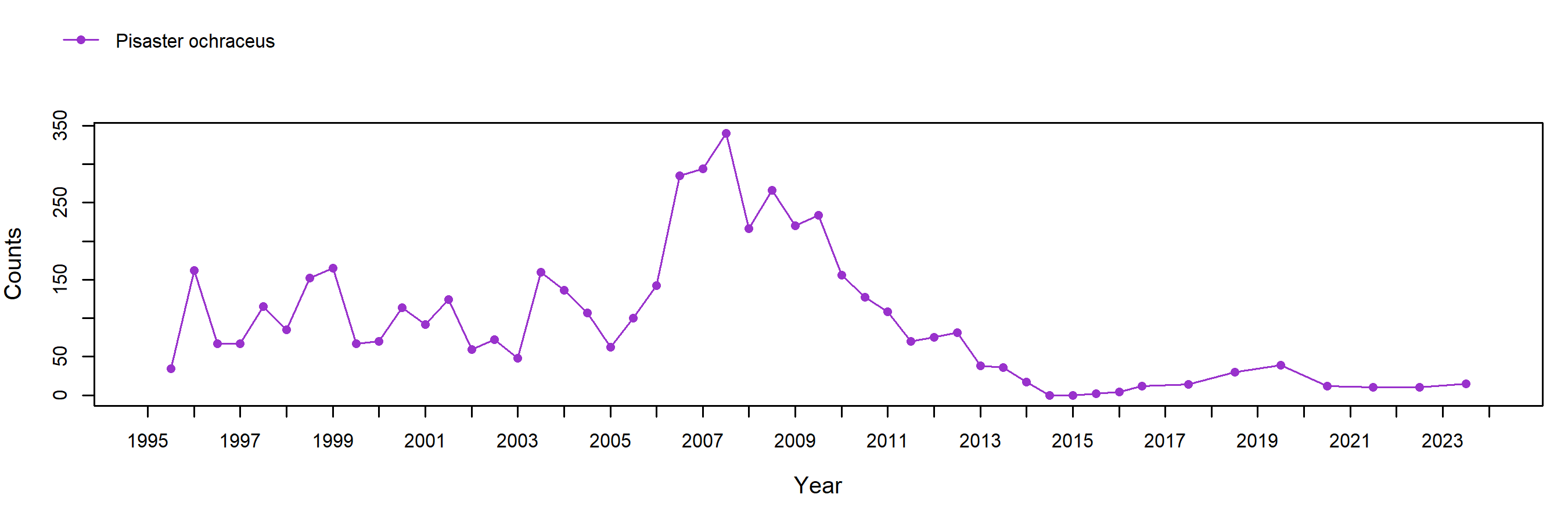
Pisaster ochraceus (Ochre Star) – sizes
